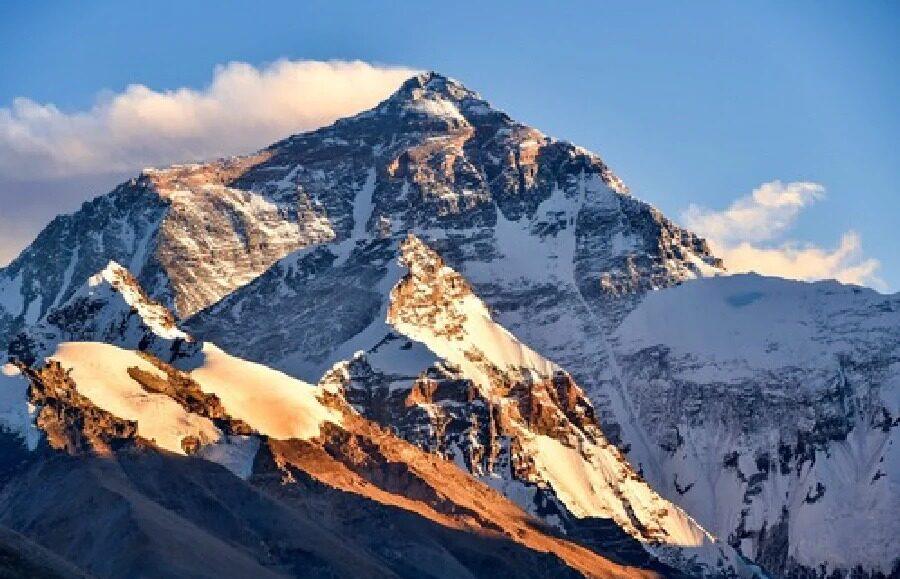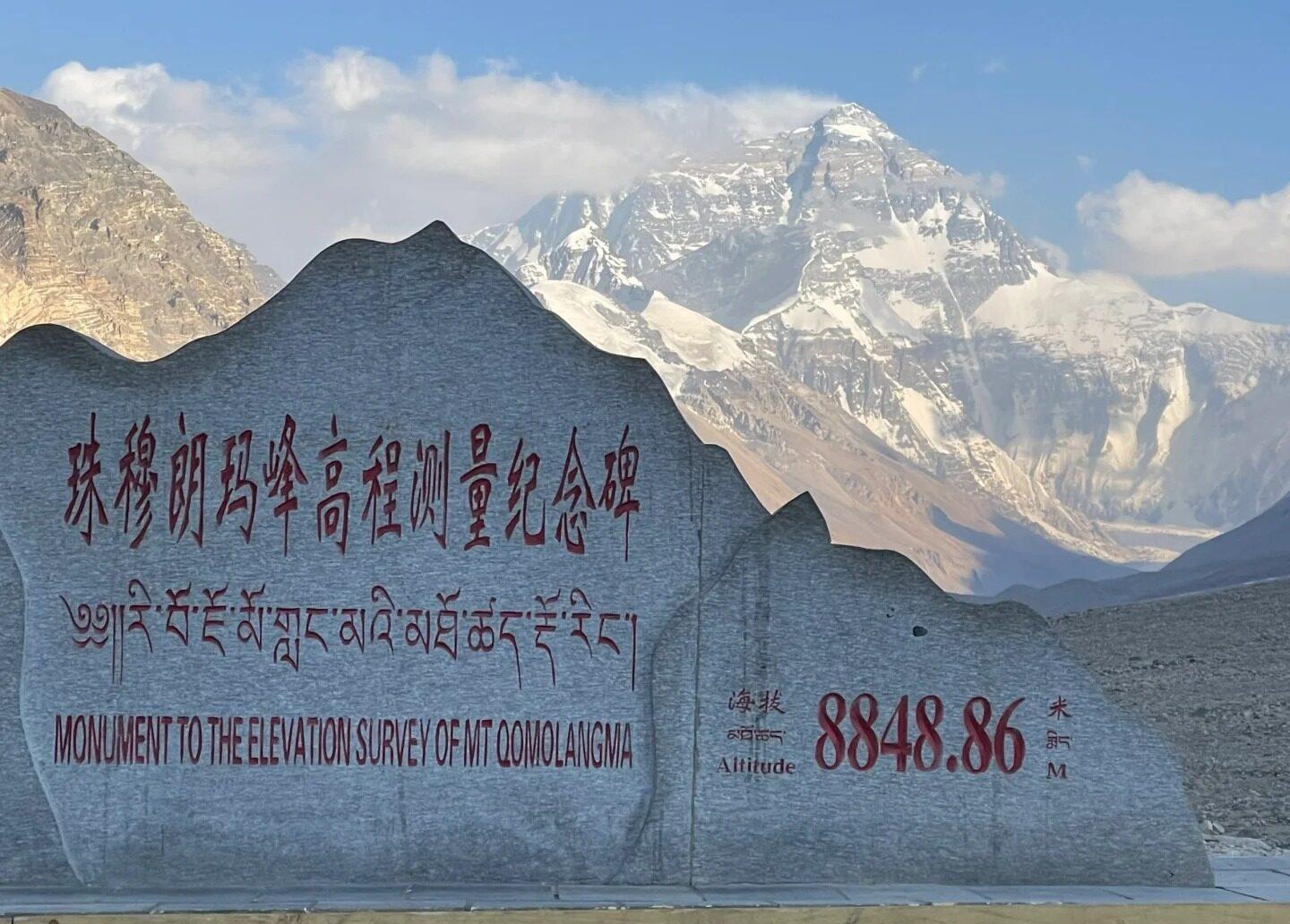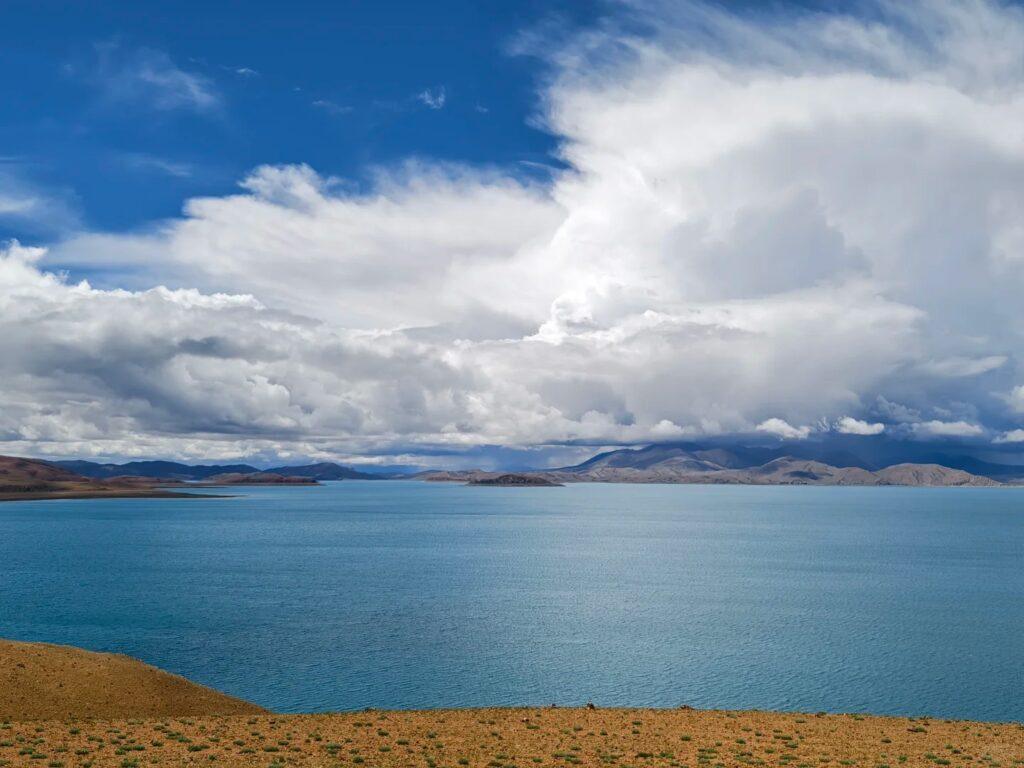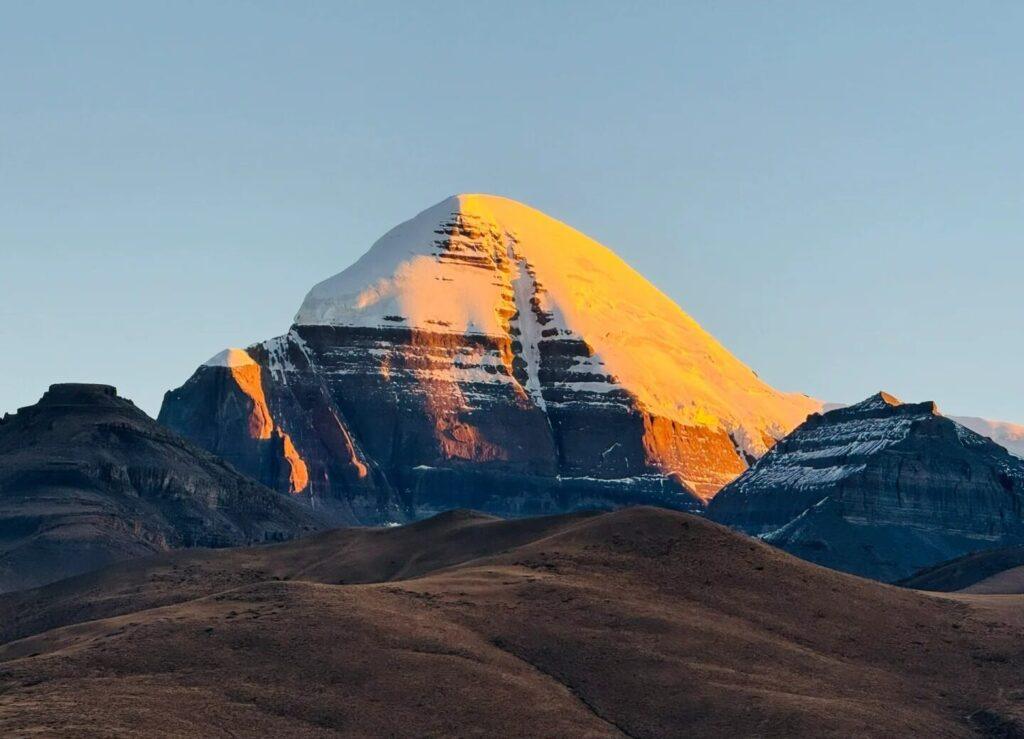Visiting Information
| Information | Details |
|---|---|
| Chinese Name | 珠穆朗玛峰 (Zhūmùlǎngmǎ Fēng) |
| Location and Address | Border of Nepal and Tibet Autonomous Region, China |
| Opening Hours | Year-round, but climbing season is typically April-May |
| Entrance Fee | Varies; climbing permits can cost $11,000+ per person |
| How to Get There | By Air: Fly to Lhasa Gonggar Airport, then take a tour to Everest Base Camp By Land: Drive from Lhasa to Everest Base Camp (approx. 700 km) Local Transport: Organized tours only from Lhasa or Shigatse |
| Best Time for Visit | April to June, September to November for base camp visits |
| Contact Info | Tibet Tourism Bureau: +86 891 6834372 |
Overview
Mt. Everest, known as Qomolangma in Tibetan and Sagarmatha in Nepali, is Earth’s highest mountain above sea level, with its peak at 8,848.86 meters (29,031.7 ft). Straddling the border between Nepal and Tibet (China), it’s part of the Mahalangur Himal sub-range of the Himalayas. Everest has long captured human imagination and represents the ultimate challenge for mountaineers worldwide.
Historical Background
Mt. Everest was first identified as the world’s highest peak in 1856 by the Great Trigonometrical Survey of India. It was named after Sir George Everest, a former Surveyor General of India. The first confirmed successful ascent was by Sir Edmund Hillary and Tenzing Norgay on May 29, 1953. Since then, Everest has seen thousands of ascents and has become a symbol of human endurance and ambition. The mountain has also witnessed numerous tragedies, including the 1996 disaster and the 2014 and 2015 avalanches.

Architectural Features
- Natural Formation: Mt. Everest is a natural mountain peak formed by the collision of the Indian and Eurasian tectonic plates. Its distinctive pyramid shape is the result of millions of years of glacial erosion and weathering.
- Base Camps: There are two main base camps on Everest: the South Base Camp in Nepal and the North Base Camp in Tibet. These camps serve as staging areas for climbers and include temporary structures such as tents, communication equipment, and medical facilities.
- Climbing Routes: The two main climbing routes are the southeast ridge from Nepal and the north ridge from Tibet. These routes include various camps at different altitudes, fixed ropes, and ladders to aid climbers in their ascent.
Cultural Importance
Mt. Everest holds great cultural significance for the Sherpa people of Nepal and the Tibetans. In Tibetan, it’s called “Qomolangma,” meaning “Goddess Mother of the World.” The mountain is considered sacred in both Buddhist and Hindu traditions. For the global community, Everest represents the pinnacle of human achievement and the spirit of adventure. It has inspired countless books, films, and expeditions, becoming a symbol of pushing human limits and overcoming challenges.
Surrounding Attractions
- Sagarmatha National Park: This UNESCO World Heritage Site surrounds Mt. Everest on the Nepalese side. It’s home to diverse flora and fauna, including rare species like the snow leopard and red panda. The park offers stunning views of the Himalayas and is a popular trekking destination.
- Rongbuk Monastery: Located on the Tibetan side, this is the highest monastery in the world at 5,000 meters (16,400 ft). It offers spectacular views of Everest’s north face and is an important pilgrimage site for Tibetan Buddhists.
- Khumbu Glacier: This is the highest glacier in the world, starting on the western side of Everest. It’s an essential part of the climb for those ascending from the Nepali side and offers unique insights into the region’s geology and climate change impacts.

Photography Opportunities
- Everest Panoramas: The classic view of Everest can be captured from various vantage points, including Kala Patthar in Nepal and the North Base Camp in Tibet. These locations offer breathtaking panoramas of Everest and surrounding peaks, especially during sunrise and sunset.
- Base Camp Life: Both the North and South Base Camps provide unique opportunities to photograph the daily life of climbers and support staff. The colorful tents against the backdrop of towering peaks create striking compositions.
- Himalayan Flora and Fauna: The surrounding regions offer chances to photograph unique high-altitude wildlife and plant life. Yaks, musk deer, and various bird species can be spotted, while rhododendron forests provide colorful foregrounds in spring.
Modern Importance
- Climate Change Research: Mt. Everest and its glaciers serve as important indicators of global climate change. Scientists study the mountain’s glaciers and ecosystem to understand the impacts of warming temperatures on high-altitude environments.
- Adventure Tourism: Everest plays a crucial role in Nepal’s and Tibet’s tourism industries. The mountain and surrounding region attract thousands of trekkers and climbers annually, contributing significantly to local economies.
- Technological Testing Ground: The extreme conditions on Everest make it an ideal testing site for new outdoor and survival gear. Many innovations in climbing equipment, cold-weather clothing, and high-altitude medical treatments have been developed or refined on Everest.
- Environmental Awareness: The increasing number of climbers on Everest has raised concerns about environmental impact. This has led to various clean-up initiatives and discussions about sustainable tourism, influencing global conversations on responsible adventure travel.

FAQ
- What is Mt. Everest famous for?
Mt. Everest is famous for being the highest mountain on Earth, standing at 8,848.86 meters (29,031.7 ft) above sea level. It’s renowned for its challenging climbs and as a symbol of human endurance and ambition. - What’s inside Mt. Everest?
Mt. Everest is a solid rock formation. Its interior consists of various layers of rock, primarily metamorphic and sedimentary, formed over millions of years by geological processes. There are no known large caves or hollow spaces inside the mountain. - Is Mt. Everest free?
No, visiting or climbing Mt. Everest is not free. There are significant costs involved, including permits, guide fees, equipment, and transportation. Climbing permits alone can cost over $11,000 per person, and a full expedition can cost $30,000 to $100,000 or more. - Is Mt. Everest worth visiting?
For many, visiting Mt. Everest (even just to Base Camp) is a once-in-a-lifetime experience. It offers breathtaking views, unique cultural experiences, and a sense of adventure. However, it’s a challenging trip that requires good physical condition and careful planning. - What to do in Mt. Everest?
Activities at Mt. Everest include trekking to Base Camp, photography, experiencing local Sherpa or Tibetan culture, and for experienced mountaineers, attempting to climb the peak. Many visitors also enjoy exploring the surrounding Sagarmatha National Park or visiting nearby monasteries. - How do I get to Mt. Everest in the local city?
To reach Mt. Everest from the Tibetan side, you typically start in Lhasa. From Lhasa, you would join an organized tour that drives to Everest Base Camp, usually with stops in cities like Shigatse for acclimatization. The journey from Lhasa to Everest Base Camp is about 700 km and takes several days. - How to visit Mt. Everest?
Visiting Mt. Everest requires joining an organized tour, as independent travel is not allowed in the Tibetan Autonomous Region. The process involves obtaining Chinese and Tibetan permits, acclimatizing to high altitudes, and typically includes a multi-day journey from Lhasa to Everest Base Camp. Most visitors trek to Base Camp or nearby viewpoints. For those planning to climb Everest, extensive preparation, training, and a significant financial investment are necessary.





